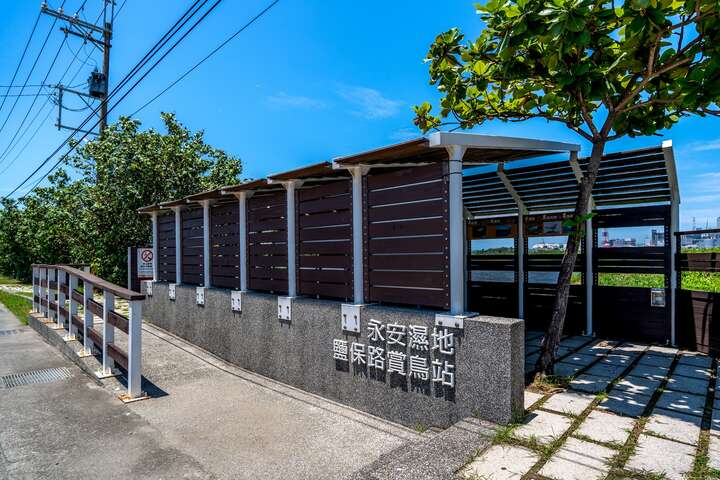Yong'an Wetlands Introduction
Yongan Wetland was formerly known as Wushulin Salt Field, established in 1908, and was an important salt production base in southern Taiwan, witnessing the rise and fall of Taiwan's salt industry. During the Japanese occupation, this salt field flourished. In 1952, the Kuomintang government took over and restructured it into the "Taiwan Salt Manufacturing Corporation," continuing the development of the salt industry. However, with the industrial transformation in the 1970s, the salt industry gradually declined. In 1985, Taiwan Power Company acquired the site, planning to use it as an expansion area for the Hsingta Power Plant, marking the end of the once-prosperous salt fields in history. The Wushulin Salt Manufacturing Company, located within Yongan Wetland, is the most historically valuable building in this area. The office building features traditional European Dutch Baroque architecture, incorporating some Japanese styles, standing prominently in the center of the abandoned salt flats. However, after the salt fields were abandoned, the building suffered from long-term neglect and damage due to high saline conditions, and at one point became a dangerous building. With the rise of local cultural awareness, Taiwan Power Company began to pay attention to this historical site and invested in restoration funds in 2006, allowing this century-old building to regain its former glory and become an important historical site witnessing the rise and fall of Taiwan's salt industry. The Wushulin Salt Manufacturing Company, from the Japanese colonial era to today, boasts a beautiful facade and exquisite pebble construction, and while the office may be empty, it still stands in the vast salt flat landscape, conveying a sense of historical atmosphere and reminiscent of the former prosperity of the salt industry. Yongan Mangrove Natural Park: A Path of Coexistence Between Ecology and Human Rights. In the past, Yongan Wetland served as a salt field area, but due to Taiwan Power Company establishing the Hsingta Thermal Power Plant, coal ash pollution rendered it impossible to produce salt. In 1986, Taiwan Power Company planned to use this area as a coal storage site, but efforts by local residents and environmentalists prevented this, eventually gaining government support to establish "Yongan Mangrove Natural Park" in 1996. Today, this site not only witnesses Taiwan's industrial transformation but also becomes the region with the richest coastal mangrove ecosystem in Kaohsiung, housing various bird species and aquatic flora and fauna. It serves as a crucial location for observing natural ecology and promoting environmental education, showcasing the sustainable value of coexistence between humanity and nature. An Ecological Treasure Where Mangroves and Birds Coexist. Yongan Wetland has a rich mangrove ecosystem that not only protects shorelines and purifies water but also serves as an essential habitat for various species. The main mangroves in Taiwan consist of species like Avicennia marina, Kandelia obovata, and Bruguiera gymnorrhiza, with southern Taiwan displaying more Kandelia obovata and Bruguiera gymnorrhiza, forming a diverse green barrier. From October to April of the following year, rare migratory birds like the black-faced spoonbill migrate from the north, peaking in numbers between January and March, making this wetland a vital habitat for wintering and foraging. Additionally, Yongan Salt Field, as the largest salt flat wetland in southern Taiwan, attracts over 110 species of birds, including first-class protected species such as the black-faced spoonbill, eastern white stork, and peregrine falcon, as well as second-class protected species like the black stork, fish eagle, and little tern. During the spring and autumn seasons, large numbers of migratory shorebirds gather, creating spectacular birdwatching scenes that attract many nature enthusiasts. With its rich ecological resources, Yongan Wetland was designated as an Important Bird Area (IBA) by BirdLife International in 1999, and in 2018, it was recognized by the Ministry of the Interior as a locally important wetland. Here, amidst the lush mangrove green corridors, it is also a paradise for migratory birds, vividly showcasing the thriving vitality of wetland ecology.





























